Mon 25 Sep 2017
A 1001 Midnights Review: MILES BURTON – Dark Is the Tunnel.
Posted by Steve under 1001 Midnights , Reviews[5] Comments
by Bill Pronzini & Newell Dunlap
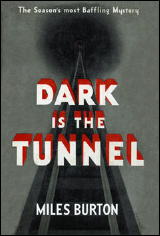
MILES BURTON – Dark Is the Tunnel. Doubleday Crime Club, US, hardcover, 1936. First published in the UK by Collins as Death in the Tunnel, hardcover, 1936.Reprinted by Poisoned Pen Press, US, softcover, 2016, under the British title.
During his thirty-seven-year career, tirelessly prolific British writer Cecil Street published almost as many novels under his Miles Burton pseudonym as he did under his more popular pen name of John Rhode. All but two of his sixty-three Burton titles feature the detective team of Inspector Arnold of Scotland Yard and his friend and amateur criminologist Desmond Merrion.
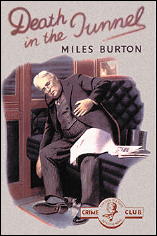
These are traditional mysteries with emphasis on deduction rather than police procedure. Emphasis is also on the stories themselves the mechanics of the puzzle — with the result that Street’s characters tend to be sketchily drawn and in many cases two-dimensional. Arnold and Merrion are not exempt; in no book do they come across as much more than puzzle-solving agents, bereft of those human characteristics that make a series sleuth distinctive and memorable.
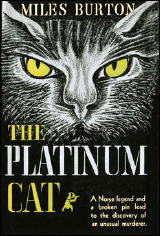
Still, Street’s plots are carefully crafted and fairly clued, and offer the reader a variety of settings (many of them English country and seaside locales), as well as interesting back-grounds and themes.
A good example is Dark Is the Tunnel, which features that ever-popular mix of murder and trains. The tunnel referred to in the title is a railway tunnel outside London-the two-and-a-half-mile Blackdown Tunnel. It is halfway through the Blackdown that the 5:00 p.m. train from Cannon Street unexpectedly comes to a stop. Apparently someone was working on the line, for the engineer saw a blinking red light, signaling him to stop, and then a green light, signaling him to proceed. But the odd thing is, there had been no report of workers in the tunnel.
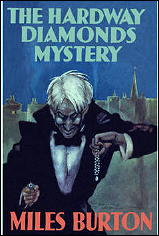
Almost simultaneously with the stop, an elderly gentle-man named Sir Wilfred Saxonby is found in his locked compartment, dead of a gunshot wound. A suicide? Perhaps, although nothing in his background suggests such a possibility.
Arnold and Merrion follow a tangled skein of motives and of clues that include a pair of wallets, a rhododendron bed, and the movements of a garage repair truck over a thirty-six-hour period, and come up with the solution to the mystery. There is little action along the way, and Street’s prose tends to be on the dry and dusty side. But the puzzle is baffling enough to provide armchair detectives with a couple of hours of pleasurable escapist reading.
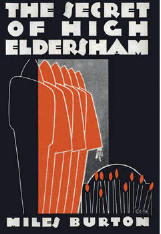
Other titles in the same vein include the first Arnold and Merrion case, The Menace on the Downs (1931); The Platinum Cat (1938); Death Visits Downspring (1941), a livelier tale than most of the Burtons, in which Arnold and Merrion solve the wartime mystery of the murdered butler and the missing radio station; and Look Alive (1950), the last Burton novel to appear in the United States, although twenty-one additional titles were published in England between 1950 and 1960.
Two other Buttons of note are The Secret of High Eldersham (1930), a tale of witchcraft in which Merrion appears alone; and The Hardway Diamonds Mystery, published that same year, which marks Arnold’s likewise solo debut.
———
Reprinted with permission from 1001 Midnights, edited by Bill Pronzini & Marcia Muller and published by The Battered Silicon Dispatch Box, 2007. Copyright © 1986, 2007 by the Pronzini-Muller Family Trust.
September 25th, 2017 at 8:46 pm
I don’t know why Poisoned Press hasn’t done more of these — the only other one may be The Secret of High Eldersham, which I already own — but I couldn’t resist. I’ve just added this one to my Amazon shopping cart.
September 26th, 2017 at 9:53 am
I’m very glad to see this review reprinted. Pronzini is the world’s leading expert on railroad mysteries.
Burton/Rhode are one of three writers explored in depth in Curtis Evans’ book “Masters of the “Humdrum” Mystery” (2012).
Rhode has not been reprinted over-much in recent years, and “critical mass” has therefor not yet formed for mass interest in his work. Still, the reprinting of the two Burton mysteries by British Library / Poisoned Pen is a good start.
Both books are reviewed, along with 17 others, on my Rhode page. This is still just a small fraction of his output:
http://mikegrost.com/rhode.htm
I don’t feel Rhode “in my bones”, the way I do some of my favorite British Golden Age authors: H.C. Bailey, Freeman Wills Crofts, R. Austin Freeman, Agatha Christie. Am still trying to pick up his frequency. He’s uneven, but some of his books have real merit.
He can create mystery puzzle plots. And has a flair for describing rural Britain.
September 26th, 2017 at 11:05 am
In my limited experience of reading Street under either pen name — mostly because his books are so hard to find — I have preferred reading his Miles Burton books far more than the ones he did as John Rhode. Maybe it’s just been the luck of the draw.
September 26th, 2017 at 10:23 pm
I have the same experience in that I generally prefer the Burton persona. I do like some of the early Priestly books, but over all Merrion wears better.
August 23rd, 2022 at 12:06 pm
[…] John Cleal at Crime Review, Sergio Angelini at Tipping My Fedora, Jim Noy at The Invisible Event, Bill Pronzini & Newell Dunlap at Mystery File, Jacqui at JacquiWine’s Journal, Nick Fuller at The Grandest Game in the World, Bev Hankins at My […]